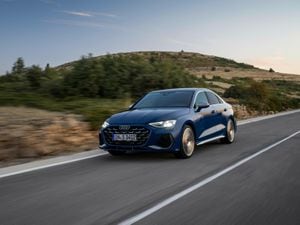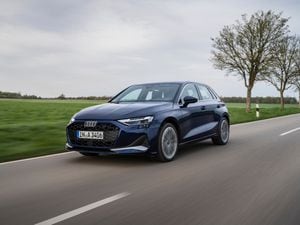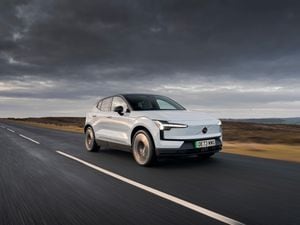First drive: Ford reboots best-selling Transit Custom
It’s the best-selling vehicle the Blue Oval sells in the UK. James Batchelor tries out the latest version of an icon
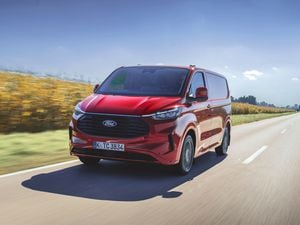
What is it?
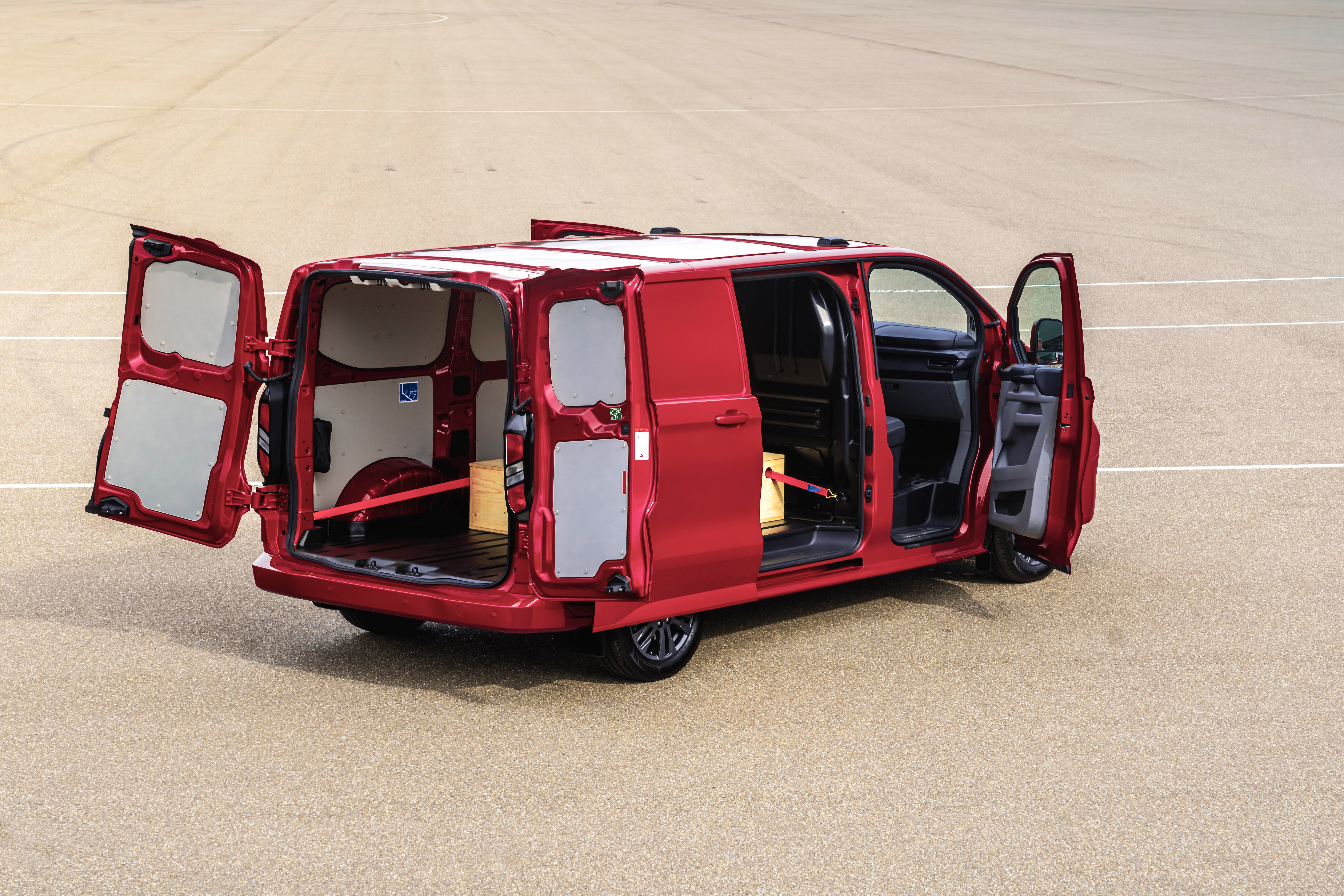
>
The Ford Transit is one of those vehicles that doesn’t need much introduction. On sale since 1965, the Transit changed the way vans could and should be, and over the decades has developed into a family of much loved vans with the Transit Custom leading the way.
Not only was the outgoing Custom the best-selling van in the UK last year, it was the most popular vehicle of all. Big boots for the new one to fill, then.
What’s new?
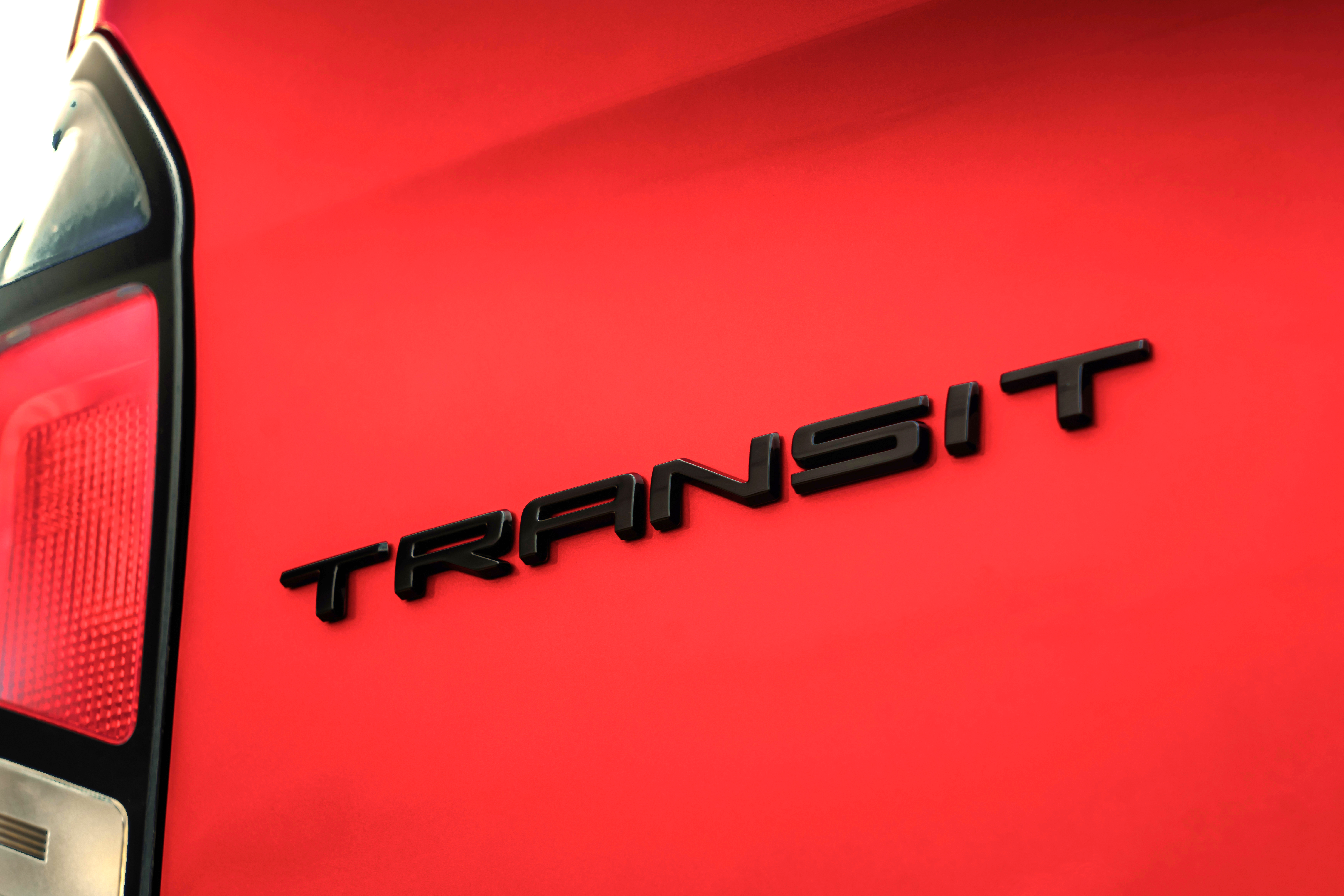
>
What isn’t new, you could say. The brand new Transit Custom is a ground-up, clean-sheet-of-paper design that also happens to be the product of a partnership with Volkswagen (the next VW Transporter will be based on the Transit Custom), so there’s a brand new platform, a full range of powertrains from diesels to a battery electric version, and a raft of new features and technologies to make a van driver’s life easier on the move.
That platform is worth dwelling on for a moment as Ford has been able to shave 100kg off the Custom’s weight, stiffen up the van by 30 per cent, and design it to accommodate batteries for the hybrid and full-electric versions. Oh, and there’s new semi-trailing-arm independent rear suspension to improve handling and comfort.
What’s under the bonnet?

>
An engine to suit every driver and fleet manager, basically. Arriving first is a 2.0-litre four-cylinder diesel in 108bhp, 134bhp, 148bhp and 168bhp forms, with six-speed manual and eight-speed automatic gearboxes, and certain diesels can be paired with four-wheel drive and an electronic limited-slip differential for light off-roading. The 148bhp with a six-speed manual is expected to be the best-seller for the time being.
The plug-in hybrid returns in this new Transit Custom but with a much larger battery, a longer EV range and a very impressive 2,300kg towing capacity. It uses a 2.5-litre petrol engine and an 11.8kWh battery for a 35-mile electric range, and there’s even an on-board 2.3kW battery to power ancillary items and accessories.
Topping the range will be the E-Transit with a 64kWh (useable) battery, giving a 209-mile electric range. It’ll be available in 134bhp and 214bhp outputs, and it too has a 2,300kg towing capacity and on-board 2.3kW battery pack.
What’s it like to drive?
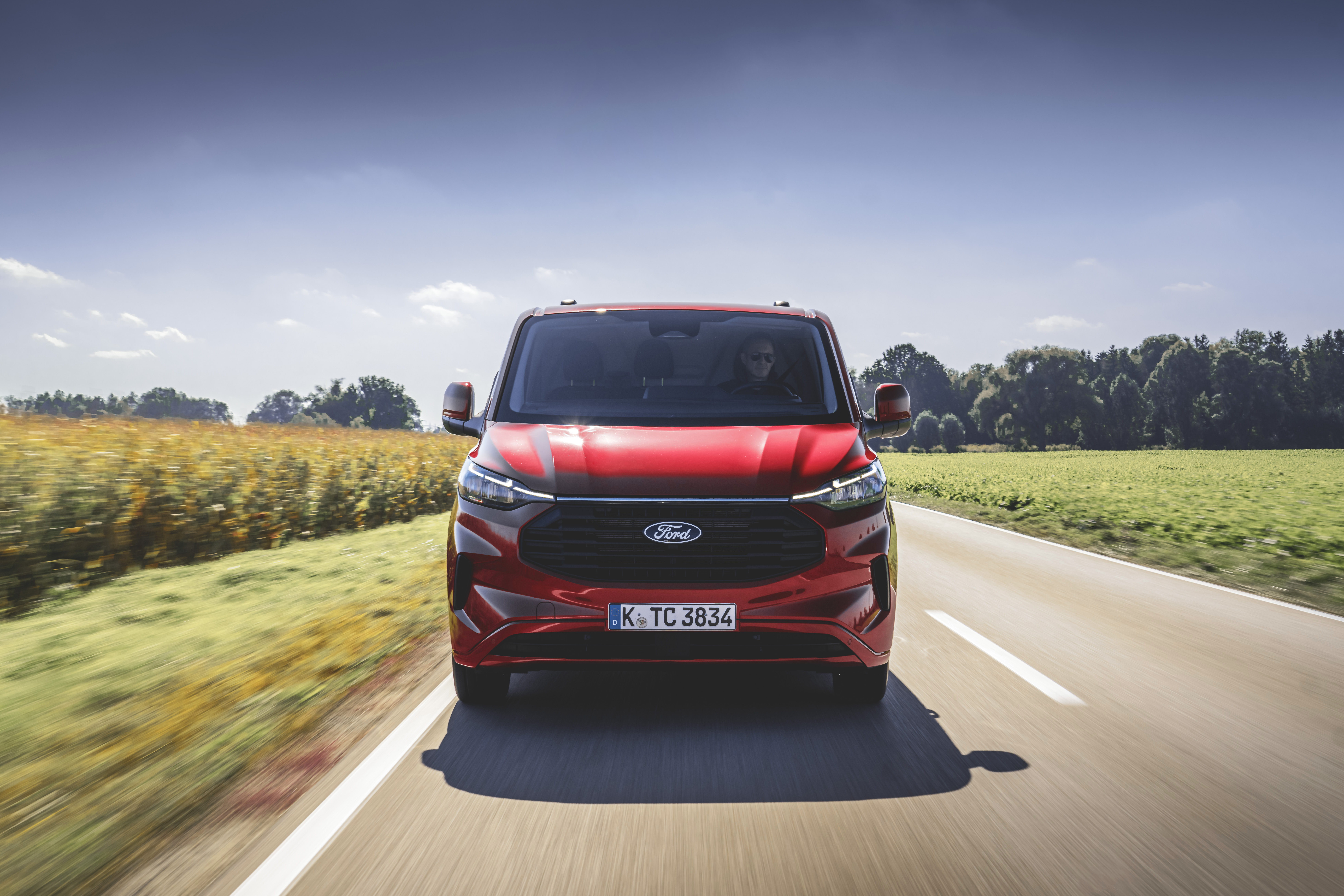
>
New rear suspension might sound like a trivial point, but it’s had a dramatic effect on the way the Transit Custom rides and handles. The Custom was always right at the top of the tree for handling, but the new one adds a layer of polish and sophistication to the package without watering down the enjoyment you get from behind the wheel. The steering is nicely accurate and our test van’s six-speed manual ‘box is typically Ford in being well-weighted and very slick to change between gears. The driver sits slightly further back than in the outgoing Custom, but it’s had no impact on visibility.
But it’s the refinement that’s the real shocker here. Not only does the van feel more sophisticated through twisty bends thanks to the new suspension, but it also rides well and is very quiet for what is, let’s face it, a workman’s tool. Even at motorway speeds the van is impressively hushed with very little wind or tyre noise entering the cabin. Meanwhile, the 148bhp 2.0-litre diesel isn’t rough and feels powerful enough, especially in our test van which was fitted with a 400kg weight in the back. It’s only on motorways when overtaking slower vehicles where it feels a little lethargic.
How does it look?

>
There’s a clear resemblance to the outgoing model with a similar footprint and proportions; we say similar as the new one is slightly lower to make it easier accessing multi-storey car parks. The Transit Custom is good looking, as vans go, and buyers can choose from a range of different models with each sporting their own style.
Want a basic, up-to-the-job ready look? There’s a Transit Custom for that. Looking for a sporty design that stands out from the crowd? There’s a Transit Custom for that. Electric models, meanwhile, turn up the style with an LED front light bar and full LED rear lights.
What’s it like inside?
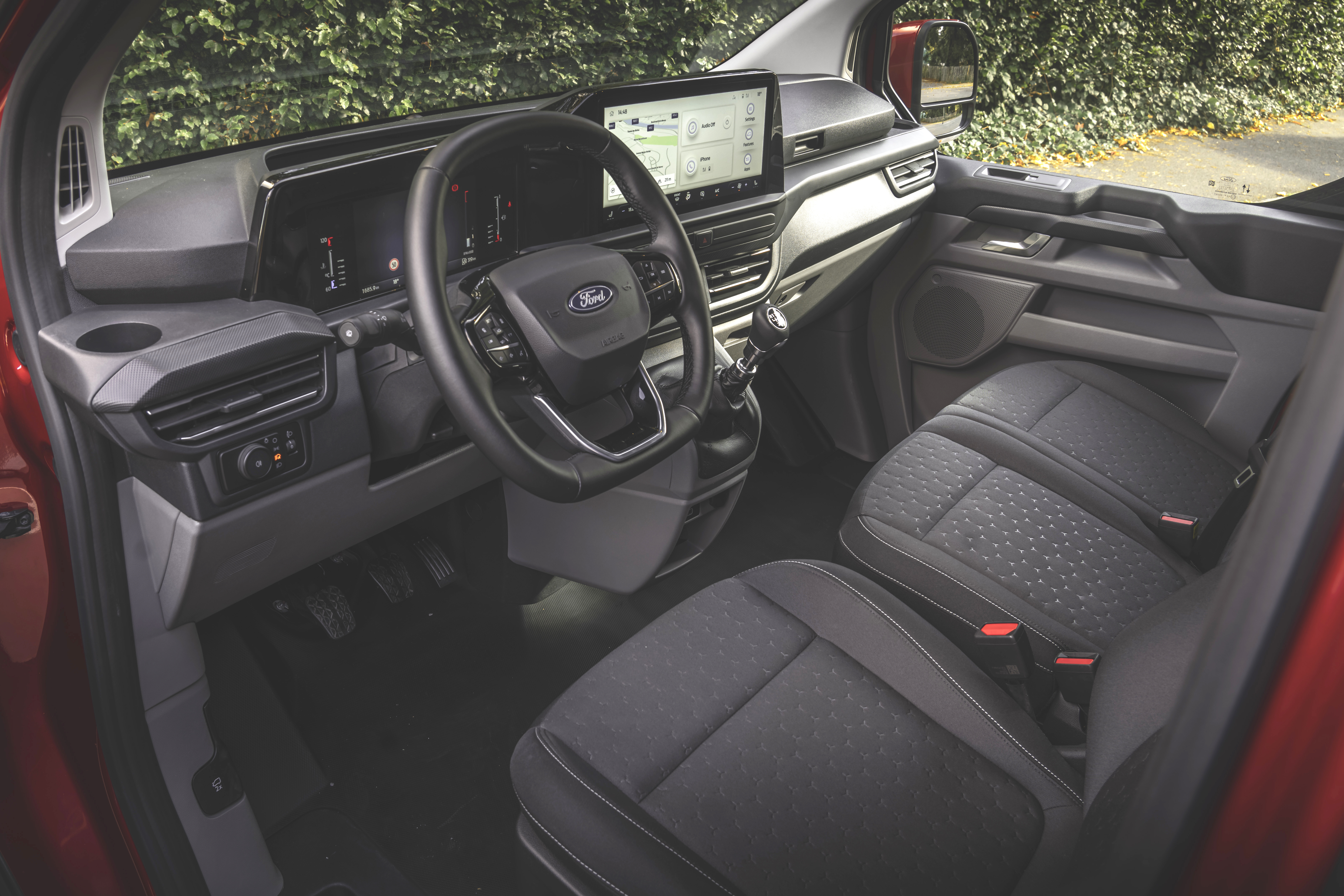
>
It looks great inside, too. The first thing you’ll notice is the massive 13-inch touchscreen that’s standard right across the range. It runs Ford’s latest Sync4 system and features a 5G modem, Apple CarPlay and Android Auto, and Alexa built-in – that’s the type of infotainment system you expect from a car, not a van. The rest of the interior is mostly well laid out (although the electric parking release button positioned between the air vents is odd) with a multitude of cubbies and deep bins to store things.
More important, though, is what’s on offer in the back. The new Custom loses some space over the outgoing model – 6.0 metres cubed compared to 5.8 metres – in the standard L1 version, but that probably won’t matter hugely to most buyers. Slide open the side door (which can be specified to be electric for the first time) and there’s now an integrated step, while the rear doors no longer have retaining arms meaning they open to the widest 180-degree position without adjustment.
What’s the spec like?

>
Unsurprisingly for a Ford, there’s a full range of trims, from a workman-like base spec right up to a sportily-styled version. The entry-level £32,350 (ex. VAT) Leader has steel wheels and unpainted bumpers, as you’d expect, but also a heated windscreen, a driver’s electric window, load-through for the passenger seat, and that large touchscreen. Many van drivers will deem the £1,150 walk-up to the Trend trim worth it, though, as it adds partially body-coloured bumpers, front parking sensors, a rear parking camera, automatic air conditioning and a lockable glove box.
Limited (from £36,080 ex. VAT) adds a few more luxuries such as fully coloured bumpers, 16-inch alloys, LED headlights, a heated driver’s seat with lumbar support, ‘super bright’ LED lights in the load area, and a load liner. Trail (from £38,080 ex. VAT) comes with front- or four-wheel drive and a mechanical limited-slip differential, while Sport from £39,800 (ex. VAT) gets a body-kit, 17-inch alloys and stripes. The fully electric models start with the Trend spec, and additionally (over the petrols and diesels) get full LED headlights with an LED light bar at the front and LED lights at the rear, and a heat pump.
However, despite all of these models being well equipped as standard, many customers will trawl the vast options list, not least choosing which body-style they want. Load volumes range from 5.8 to 6.8m cubed for the standard roof height, with payload up to 1,350kg and a maximum load length of 3,450mm (thanks to the load-through feature under the passenger seats). The maximum braked trailer weight, meanwhile, is 2,800kg for the diesel, and 2,300kg for the plug-in hybrid – that’s very impressive for a PHEV.
Verdict
Ford has long dominated this part of the van market and we reckon it’ll only continue this habit with the new Transit Custom. Ford has cleverly taken all the things van drivers loved about the old one and added a raft of new features – many of which were suggested by owners – to make it easier to live with.
The fact that it’s now even better and more comfortable to drive and comes with a powertrain to suit everyone is just the icing on the cake.

